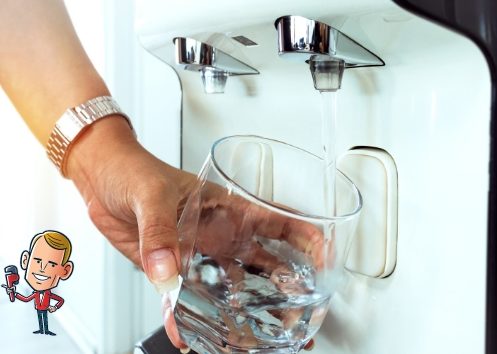Water filtration, purification, and softening all involve different methods for cleaning water and making it safe to use. Find out more about each process.
Water Filtration
Water filtration is among the core stages of wastewater and water treatment. It is the process of reducing or removing the accumulation of particulate matter, which includes fungi, viruses, parasites, bacteria, algae, suspended particles, biological contaminants, and undesirable chemicals from polluted water. This is to provide clean and safe water for use and purposes such as pharmaceutical application, drinking, and medical benefits.
Water filtration is necessitated by using a water filtering device that removes impurities from water through chemical and biological processes and physical barriers. The filtered water is purified and becomes safe for drinking.
The success rate of the filtration process depends on the type and brand of filtration system in place that was used to provide safe, clean drinking water. The safest and cheapest mode of water purification without the use of a filtration system is boiling.
The filtration process for drinking water incorporates five stages: mechanical, sediment, bacterial, mineral, and chemical. A water filtration system forces water via a sizeable sieve-like holder, which collects large dirt particles cleaning the water.
There are different types of water filtration systems and filters, with each system using a clear water filter or combining additional water filters.
1. Absorption Filtration Methodology
In this method, a specific membrane absorbs and attracts all harmful pollutants from the water. The absorption process incorporates different types of water filters, the most common being carbon absorption by using activated alumina filters and carbon filters. The filters used are known as absorption filters.
The filter attracts pollutants toward the carbon center, allowing the remaining water to flow throughout the membrane. A simple carbon block filter is efficient, though it draws impurities such as pesticides/insecticides, industrial solvents, chlorine, cleaners, and chemicals. Carbon filtering utilizes activated carbon filters with both purification and filtration systems.
Activated alumina filters use activated alumina, a material from aluminum hydroxide used to filter toxic minerals such as fluoride, arsenic, and selenium.
It works the same way as a carbon filter, with the activated alumina absorbing lethal minerals and chemicals and successfully cleaning the water.
2. Sequestration Filtration System
Water may contain minerals such as magnesium and calcium, which corrode pipelines polluting the water. In this process, you do not remove the harmful minerals; instead, you use chemicals that separate the minerals from the water. It helps prevent waste of the nutritional components and nutrients found in water.
3. Iron Filtration System
Iron in unfiltered water is toxic and dangerous when it mixes with minerals and chemicals such as magnesium and manganese. Air-injected iron filters remove the heavy metals found in water. It uses a technique of drawing air to separate the iron.
The filter oxidizes the iron, converting it to a solid state, and the filter further traps into its mesh-like membrane. Not only does this technique isolate iron, but it also separates heavy metals such as sulfur. It is a suitable mode of removing pollutants from water without adding chemicals.
Chemical injection filters operate in the same manner as air injection filters, only that they use chemicals. In this method, the filters administer various liquid substances into the water. The chemical liquids remove heavy metals, corrosion, and iron and regulate the water’s pH.
Greensand iron filtration incorporates greensand; a sandy rock mineral. It removes heavy toxic metals and iron from the water. It reacts with lethal elements in water, attaching and converting to them. With this method, one can remove manganese, iron, radium, arsenic, and hydrogen sulfide, among other toxic components, from water.
4. Mechanical Filtration Systems
In this method, the mechanical filter isolates huge and visible contaminants using simple filters, termed mechanical filtration. The sand and sediment filter is the simplest mechanical water filter, removing visible pollutants such as debris, dirt, and dust. The sand and sediment water filter can strain dust, gravel, dirt, sand, coal, shale, and stones, but it will not guarantee purity.
Ceramic filters are among the traditional mechanical filtration systems that incorporate a porous ceramic filter found at the core, which captures all sediments and some bacteria.
This method can be applied to large-scale pipe channels and your house. Some of the benefits associated with water filtration are as follows:
- Decreases contaminants exposure
- Promotes healthier cooking
- Improves hydration, energy, and health levels
- Safe for creating beverages
- Gives out a pleasant odor and taste
Water Purification
Water purification combines semipermeable membranes, chemical treatments, and sieve-like filters to remove pollutants from water. You can simultaneously use water filtration and a water purification system, giving you clean, consumable water.
Different purification systems incorporate multiple filtration water types with purifiers.
1. Ultrafiltration
This method uses the semipermeable membrane that prevents the tiniest organic molecules and microorganisms from getting through. As water flows through a semipermeable membrane, it isolates solids and molecules with heavy weight on one side.
The low-weight molecules and water shift across the semipermeable membrane on the other side of it. This system fortifies the water and removes 90-100% of pathogens.
2. UV Disinfection Filtration
This method works by emission of ultraviolet light, which is a distinctive light form with a precise wavelength that has the strength to disrupt organisms. A UV water filter releases UV light directly into the water, which eliminates microorganisms, which include viruses and bacteria in water.
3. Distillation
Distillation is when water vaporizes and converts back into droplets via condensation. Distilled water does not contain metals, electrolytes, or minerals. Water distillers operate by heating water at high temperatures, which converts them to mist or mist drips and all contaminants into vapor.
The distiller changes the vapor into the water but shifts it to an isolated container with no contaminants. Distilled water is the purest water one can get.
4. Reverse Osmosis
This process is a water purification technology that uses a semipermeable membrane filter. It removes debris, dirt, microorganisms, and sediments. One can effectively attach up to six reverse osmosis filters. Reverse osmosis systems are filtration systems that utilize special membranes and generic filters.
Some of the benefits associated with water filtration systems are as follows:
- Removes all contaminants
- Lowers risk of health problems
- Promotes better life quality
- Helps in protecting the environment
Water Softening
This technique eliminates magnesium, calcium, and other metals in hard water, which helps keeps your pipes free of sediment and buildup. It is a crucial process as it helps extend the life of household appliances and pipelines and improve the life span and functioning of solar heating modes, air conditioning units, and other water-based appliances.
The water softening process uses ion-exchange resins, reverse osmosis, or lime softening. Other techniques include sequestration by adding chelating agents and precipitation modes.
The following are some of the benefits found in water softening:
- Avoiding corrosion in distribution systems
- Reduces odors, total solids content, and taste
- Removes manganese, radioactivity, and iron
- Lime softening helps in disinfection
For the best plumbing services in Tucson, AZ, Cal’s Plumbing is a call away. We are experienced and BBB-certified with a rating of A+. We offer services such as drain cleaning, drain repair, sewer pump services, and camera inspection, among others. For more information regarding water filtration, purification, and softening, contact Cal’s Plumbing.






